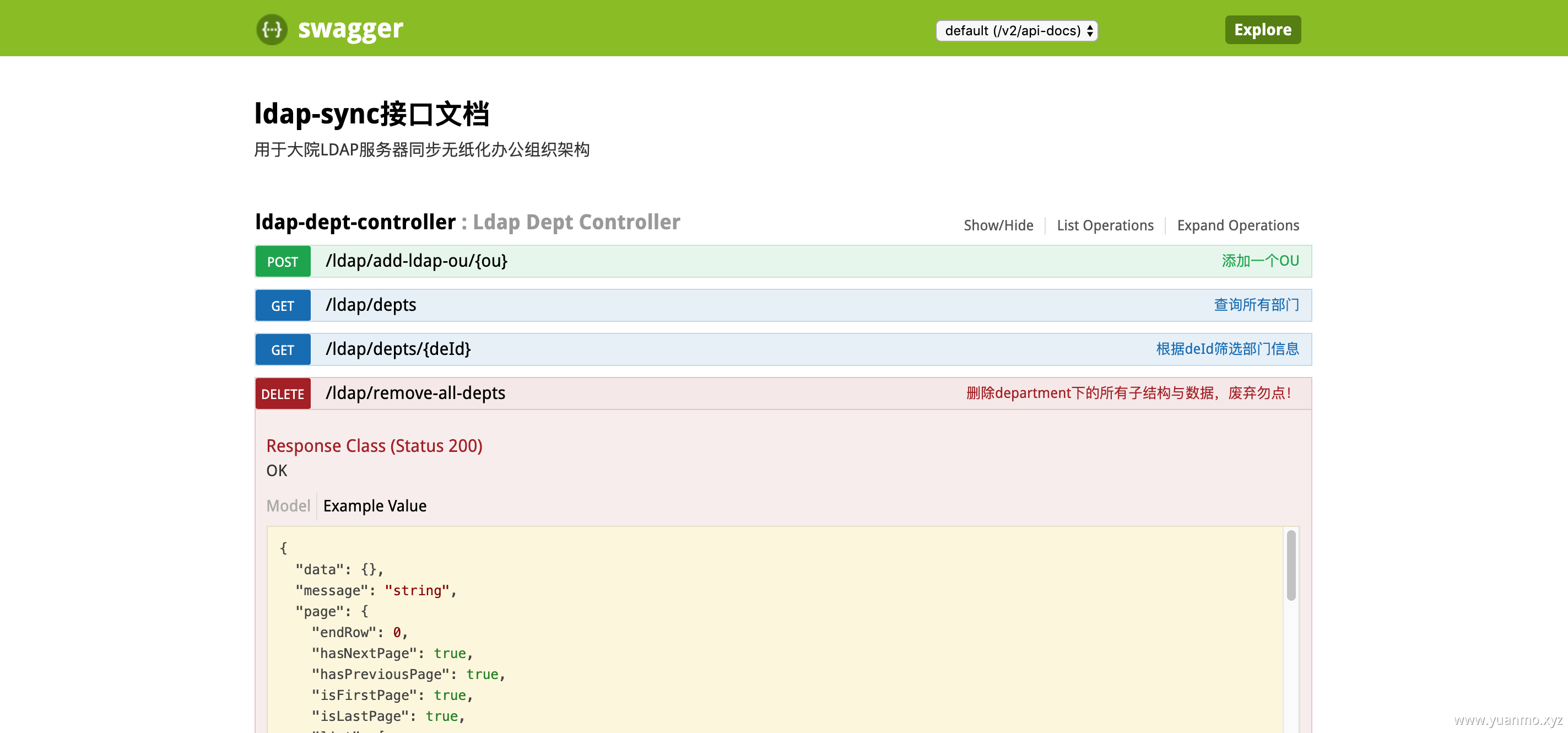Swagger…现在好像又多了一层台味…
前言
以前刚接触到Swagger,不知道他还能导出成Word、PDF文档,就觉得Postman+文档够用了,现在觉得代码中集成这样的框架,在初期能够方便很多。
- 功能丰富 :支持多种注解,自动生成接口文档界面,支持在界面测试API接口功能;
- 条理清晰 :开发过程中花一点写注释的时间,就可以及时的更新API文档,省心省力;
- 整合简单 :通过添加pom依赖和简单配置,内嵌于应用中就可同时发布API接口文档界面,不需要部署独立服务。
Swagger集成项目
Swagger本身是一种规范,而SpringFox-Swagger是专注于Spring生态的实现,Spring-Swagger-UI则是对Swagger-UI的封装。
代码整整合也非常的简单,首先是pom引入:
pom引入
1
2
3
4
5
6
7
8
9
10
11
12
13
14
15
| <dependency>
<groupId>io.springfox</groupId>
<artifactId>springfox-swagger2</artifactId>
<version>2.6.1</version>
</dependency>
<dependency>
<groupId>io.springfox</groupId>
<artifactId>springfox-swagger-ui</artifactId>
<version>2.6.1</version>
</dependency>
<dependency>
<groupId>io.github.swagger2markup</groupId>
<artifactId>swagger2markup</artifactId>
<version>1.3.1</version>
</dependency>
|
其中swagger2markup是用于Swagger导出PDF/HTML的依赖,离线文档之后再更新,目前还有点问题。
在application.properties中加这么一句spring.resources.static-locations=classpath:/static/,不然swagger-ui.html这个页面会被拦截。
Configuration注入
1
2
3
4
5
6
7
8
9
10
11
12
13
14
15
16
17
18
19
20
21
22
23
24
25
26
27
28
29
30
31
|
@Configuration
public class SwaggerConfiguration {
@Bean
public Docket createRestApi() {
return new Docket(DocumentationType.SWAGGER_2)
.apiInfo(apiInfo())
.select()
.apis(RequestHandlerSelectors.basePackage("com.zrtg.ldapsync.common.action"))
.paths(PathSelectors.any())
.build();
}
private ApiInfo apiInfo() {
return new ApiInfoBuilder()
.title("ldap-sync接口文档")
.description("用于大院LDAP服务器同步无纸化办公组织架构")
.termsOfServiceUrl("http://gitlab.zrtg.com/996team/ldap-sync")
.version("1.0")
.build();
}
}
|
- 其中
basePackage中的一般配置controller的路径,paths属性进行过滤,apis属性可以设置扫描包,或者通过注解的方式标识;通过enable属性,可以在application-{profile}.properties文件中设置相应值,主要用于控制生产环境不生成接口文档。另外还有groupName()进行分组,比如高级客户、低端人口(雾)之类的分组。
apiInfo中包装了文档的title、description、version这些信息。
然后在Springboot的入口类中加上@EnableSwagger2表示开启Swagger2。
完成这些步骤后,发现其实访问https://localhost/swagger-ui.html并没有swagger页面,原因是在所映射的地址在SpringBoot静态资源文件夹下找不到。所以需要定义一个拦截器来放行。
1
2
3
4
5
6
7
8
9
10
11
12
13
14
15
16
17
18
19
20
|
@Configuration
public class WebMvcConfiguration implements WebMvcConfigurer {
@Override
public void addResourceHandlers(ResourceHandlerRegistry registry) {
registry.addResourceHandler("swagger-ui.html")
.addResourceLocations("classpath:/META-INF/resources/");
registry.addResourceHandler("/templates/**")
.addResourceLocations("classpath:/META-INF/resources/templates/");
}
}
|
我们只需要重写addResourceHandlers方法即可,通过addResourceHandler添加映射路径,然后再通过addResourceLocations来指定路径。addResourceLocations指的是文件放置的目录,addResoureHandler指的是对外暴露的访问路径。
在controller中集成注解
| 注解 |
描述 |
| @Api |
修饰整个类,描述Controller的作用 |
| @ApiOperation |
描述一个类的一个方法,或者说一个接口 |
| @ApiParam |
单个参数描述 |
| @ApiModel |
用对象来接收参数 |
| @ApiProperty |
用对象接收参数时,描述对象的一个字段 |
| @ApiResponse |
HTTP响应其中1个描述 |
| @ApiResponses |
HTTP响应整体描述 |
| @ApiIgnore |
使用该注解忽略这个API |
| @ApiError |
发生错误返回的信息 |
| @ApiImplicitParam |
一个请求参数 |
| @ApiImplicitParams |
多个请求参数 |
最后通过浏览器来访问https://localhost/swagger-ui.html如下图:

Method类型、相关描述、Example、StatusCode都会自动帮你生成。
小问题记录
注解问题
直接在通过@PathVariable注解的参数在Swagger中用了@ApiImplicitParam,发现在页面中请求是有问题的,这个注解应该对应的是func(@Param("arg") String arg)方法,实际上正确的用法是@ApiParam。类似下图代码:
1
2
3
4
5
6
7
8
9
10
11
12
|
@ApiOperation(value = "添加一个OU")
@ApiParam(name = "ou", value = "组织单元", required = true)
@PostMapping("/add-ldap-ou/{ou}")
public BaseResult<String> addLdapOu(@PathVariable("ou")String ou){
...
}
|
与Shiro集成的问题
通过无拦截测试总结了如下的资源路径是swagger在渲染页面时的必需。如果工程中包含了Shiro安全框架,需要对swagger进行放行。
1
2
3
4
5
6
7
8
9
10
11
|
Map<String, String> filterChainDefinitionMap = new LinkedHashMap<>();
filterChainDefinitionMap.put("/swagger-ui.html", "anon");
filterChainDefinitionMap.put("/swagger-resources/**", "anon");
filterChainDefinitionMap.put("/v2/**", "anon");
filterChainDefinitionMap.put("/webjars/**", "anon");
filterChainDefinitionMap.put("/configuration/**", "anon");
ShiroFilterFactoryBean shiroFilterFactoryBean = new ShiroFilterFactoryBean();
shiroFilterFactoryBean.setFilterChainDefinitionMap(filterChainDefinitionMap);
|
在你的Shiro配置类中添加如上路径即可。
离线文档(后续更新)
